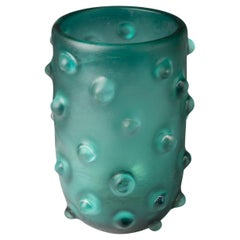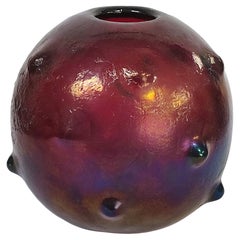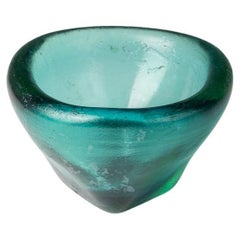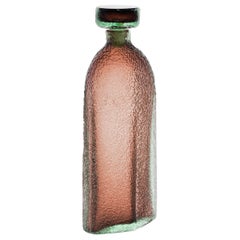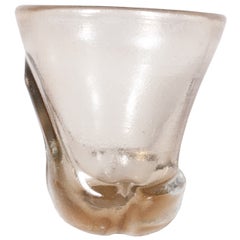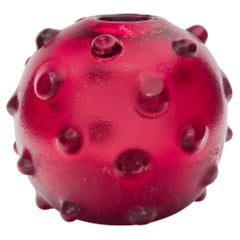Corroso Vase By Carlo Scarpa
Vintage 1930s Italian Vases
Murano Glass
Vintage 1930s Vases
Murano Glass
Vintage 1930s Italian Vases
Murano Glass
Vintage 1930s Italian Vases
Murano Glass
Mid-20th Century Italian Brutalist Vases
Glass, Murano Glass, Art Glass
Recent Sales
Vintage 1930s Glass
Art Glass
Vintage 1930s Italian Glass
Glass, Murano Glass
Vintage 1930s Italian Mid-Century Modern Vases
Murano Glass
Vintage 1950s Italian Modern Glass
Murano Glass
Vintage 1950s Italian Modern Vases
Glass
Vintage 1930s Italian Art Deco Vases
Murano Glass, Blown Glass
Vintage 1930s Italian Vases
Glass
Vintage 1930s Italian Modern Vases
Glass
Vintage 1930s Italian Mid-Century Modern Vases
Glass
People Also Browsed
Vintage 1960s French Mid-Century Modern Table Lamps
Iron
Vintage 1950s American Mid-Century Modern Sofas
Mohair, Walnut
Vintage 1960s Spanish Mid-Century Modern Lounge Chairs
Brass
Mid-20th Century Italian Other Cabinets
Marble
Antique Late 19th Century Japanese Meiji Vases
Enamel, Copper
Vintage 1960s Italian Rococo Revival Decorative Bowls
Art Glass
21st Century and Contemporary Italian Animal Sculptures
Crystal, Gold Plate, Brass
Vintage 1930s French Art Deco Vases
Ceramic
Vintage 1930s Swedish Scandinavian Modern Chandeliers and Pendants
Pewter
Antique Late 19th Century Japanese Meiji Vases
Enamel, Silver
Vintage 1930s Swedish Scandinavian Modern Vases
Bronze
Vintage 1920s French Art Deco Vases
Blown Glass
21st Century and Contemporary French Aubusson Pillows and Throws
Textile, Wool, Velvet, Feathers
Antique Late 19th Century Japanese Meiji Vases
Enamel
Vintage 1920s French Art Deco Vases
Blown Glass
Early 20th Century American Art Nouveau Table Lamps
Bronze, Wire
Carlo Scarpa for sale on 1stDibs
Carlo Scarpa was born in Venice in 1906 and became one of the leading figures of architecture and international design during the 20th century. At merely 21 years old — and still a student at the Academy of Fine Arts — Scarpa began working as a designer for master Murano glassmaker M.V.M. Cappellin. Within a few years, he completely revolutionized the approach to art glass.
In a short time, under the guidance of Scarpa, the Capellin furnace not only established itself as the top glass company, but above all it introduced modernity and international fame to Murano glassmaking. Scarpa created a personal style of glassmaking, a new vision that irreversibly changed glass production.
The young Scarpa experimented with new models and colors: his chromatic combinations, impeccable execution and geometric shapes became his modus operandi. Thanks to Scarpa’s continuous research on vitreous matter, Cappellin produced a series of high-quality glass objects, that saw the company revisiting ancient processing techniques such as the watermark and Phoenician decoration.
When he encountered the challenge of opaque glass, Scarpa proposed introducing textures of considerable chromatic impact, such as glass pastes and glazed glass with bright colors. Scarpa also collaborated in the renovation of Palazzo da Mula in Murano, the home of Cappellin. At the academy, he obtained the diploma of professor of architectural design and obtained an honorary degree from the Venice University Institute of Architecture of which he was director.
In 1931, Scarpa's collaboration with Cappellin ended, following the bankruptcy of the company because it was not able to withstand the economic crisis linked to the Great Depression. But Scarpa did not go unnoticed by Paolo Venini — in 1933, the young designer became the new artistic director of the biggest glass company in Murano.
Master glassmakers thought Scarpa's projects and sketches were impossible, but the passionate and curious designer always managed to get exactly what he wanted. Until 1947 he remained at the helm of Venini & Co., where he created some of the best known masterpieces of modern glassmaking. Scarpa’s work with Venini was characterized by the continuous research on the subject, the use of color and techniques that he revisited in a very personal way, and the development of new ways of working with master glassmakers.
At the beginning of the 1930s, "bubble", "half filigree" and "submerged" glass appeared for the first time on the occasion of the Venice Biennale of 1934. A few years later, at the Biennale and the VI Triennale of Milan, Venini exhibited its lattimi and murrine romane pieces, which were born from a joint idea between Scarpa and Paolo Venini.
In 1938 Scarpa increased production, diversifying the vases from "objects of use" to sculptural works of art. In the same year he laid the foundation for the famous "woven" glass collection, exhibited the following year. In the subsequent years, Scarpa–Venini continued to exhibit at the Biennale and in various other shows their the "black and red lacquers," the granulari and the incisi, produced in limited series, and the "Chinese," which was inspired by Asian porcelain.
Scarpa's creations for Venini garnered an international response and were a great success, leaving forever an indelible mark on the history of glassmaking. The last Biennale in which Carlo Scarpa participated as artistic director of Venini was in 1942. He left the company five years later.
The time that Scarpa spent in the most important glass factory in Murano would attach a great artistic legacy to the company. His techniques and styles were resumed in the postwar period under the guidance of Tobia Venini, Paolo's son. In the 1950s, after the departure of Scarpa, Fulvio Bianconi was the new visionary at the Biennials with Venini.
On 1stDibs, vintage Carlo Scarpa glass and lighting are for sale, including decorative objects, tables, chandeliers and more.
(Biography provided by Ophir Gallery Inc.)
Finding the Right Vases for You
Whether it’s a Chinese Han dynasty glazed ceramic wine vessel, a work of Murano glass or a hand-painted Scandinavian modern stoneware piece, a fine vase brings a piece of history into your space as much as it adds a sophisticated dynamic.
Like sculptures or paintings, antique and vintage vases are considered works of fine art. Once offered as tributes to ancient rulers, vases continue to be gifted to heads of state today. Over time, decorative porcelain vases have become family heirlooms to be displayed prominently in our homes — loved pieces treasured from generation to generation.
The functional value of vases is well known. They were traditionally utilized as vessels for carrying dry goods or liquids, so some have handles and feature an opening at the top (where they flare back out). While artists have explored wildly sculptural alternatives over time, the most conventional vase shape is characterized by a bulbous base and a body with shoulders where the form curves inward.
Owing to their intrinsic functionality, vases are quite possibly versatile in ways few other art forms can match. They’re typically taller than they are wide. Some have a neck that offers height and is ideal for the stems of cut flowers. To pair with your mid-century modern decor, the right vase will be an elegant receptacle for leafy snake plants on your teak dining table, or, in the case of welcoming guests on your doorstep, a large ceramic floor vase for long tree branches or sticks — perhaps one crafted in the Art Nouveau style — works wonders.
Interior designers include vases of every type, size and style in their projects — be the canvas indoors or outdoors — often introducing a splash of color and a range of textures to an entryway or merely calling attention to nature’s asymmetries by bringing more organically shaped decorative objects into a home.
On 1stDibs, you can browse our collection of vases by material, including ceramic, glass, porcelain and more. Sizes range from tiny bud vases to massive statement pieces and every size in between.
